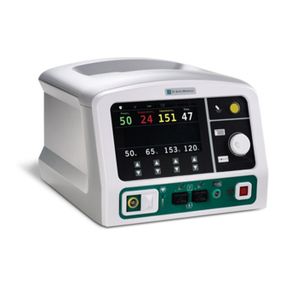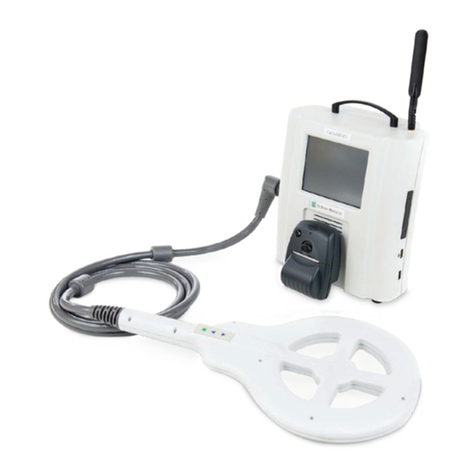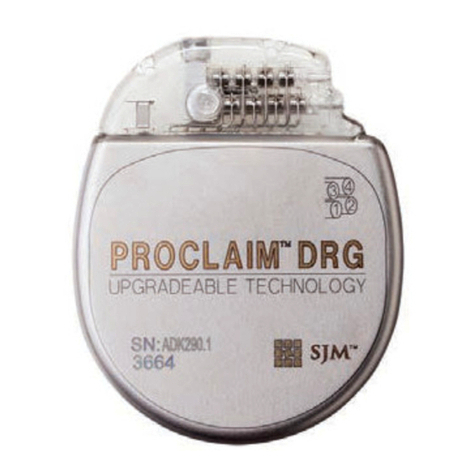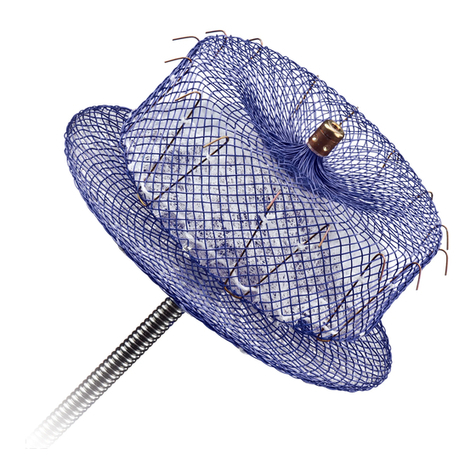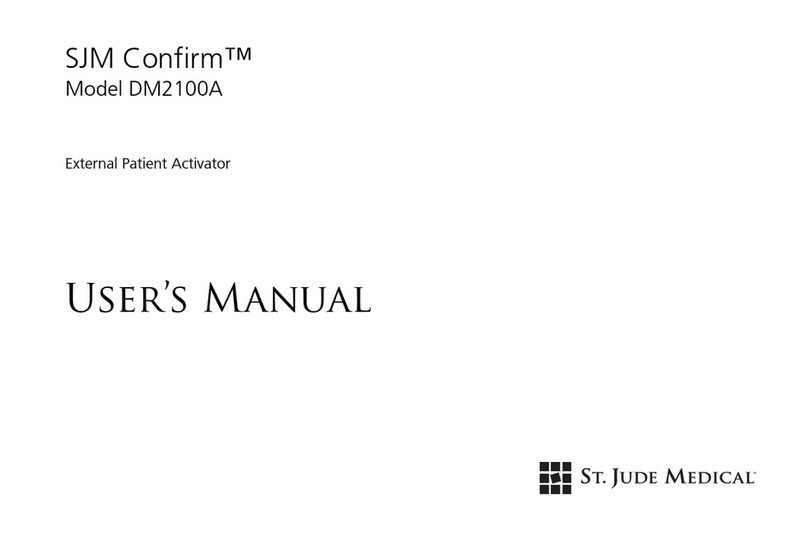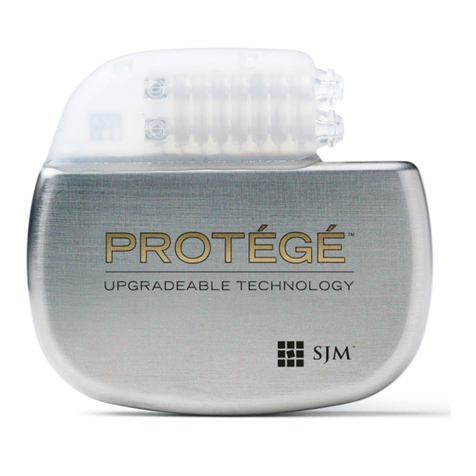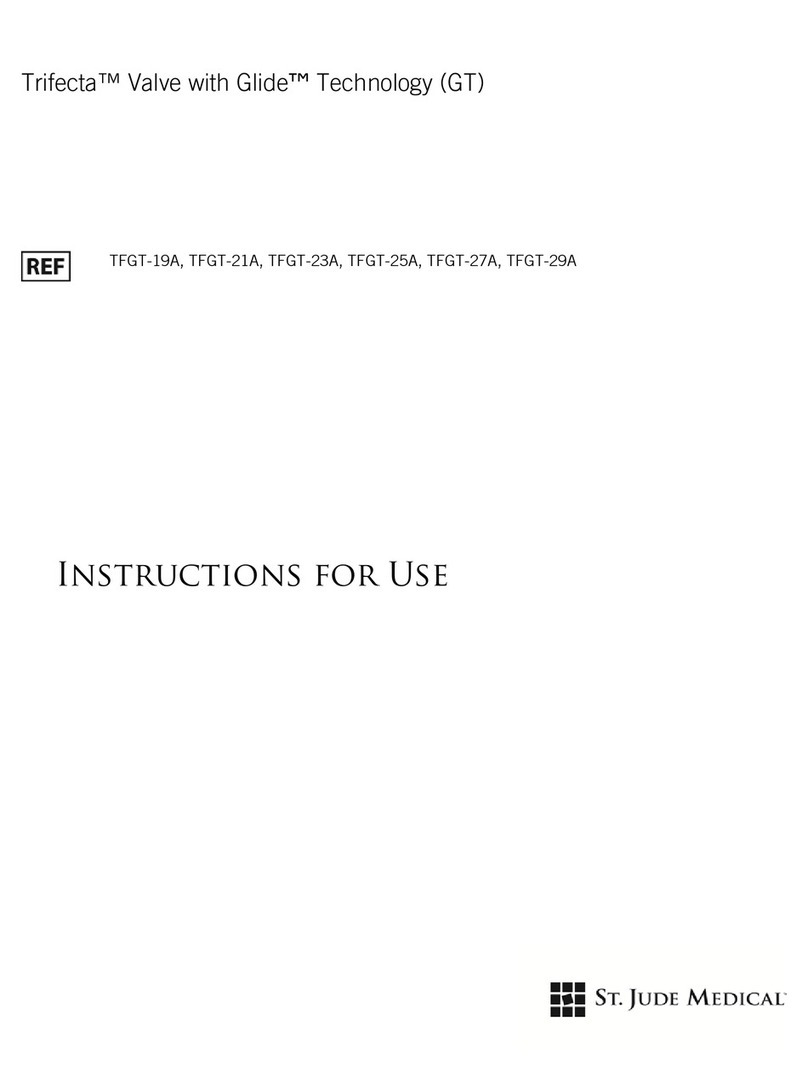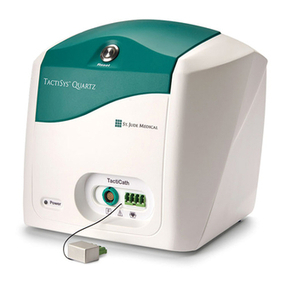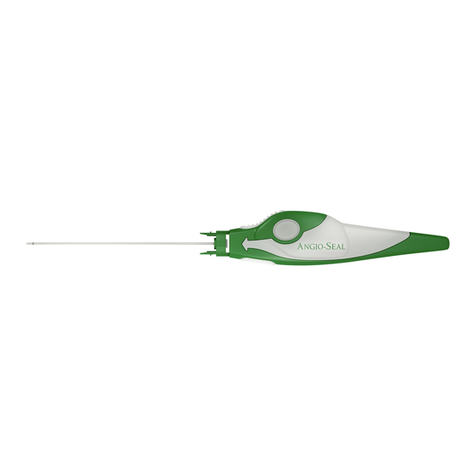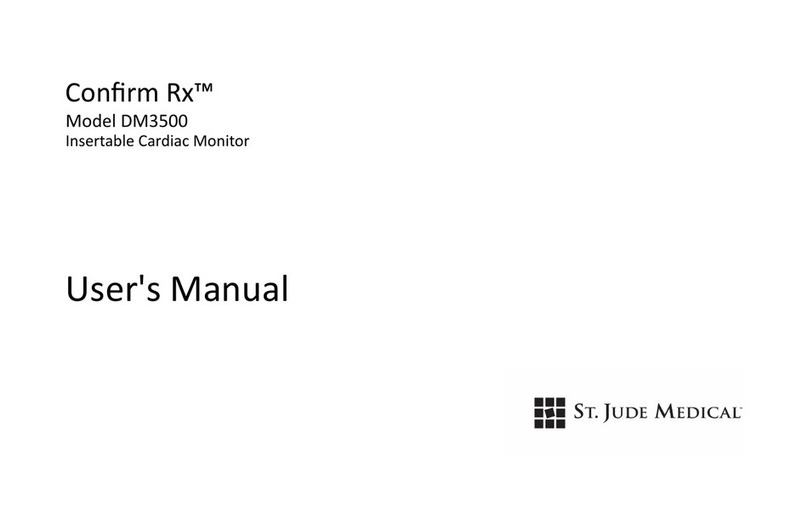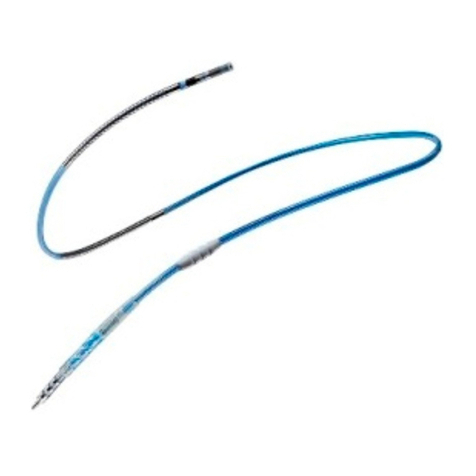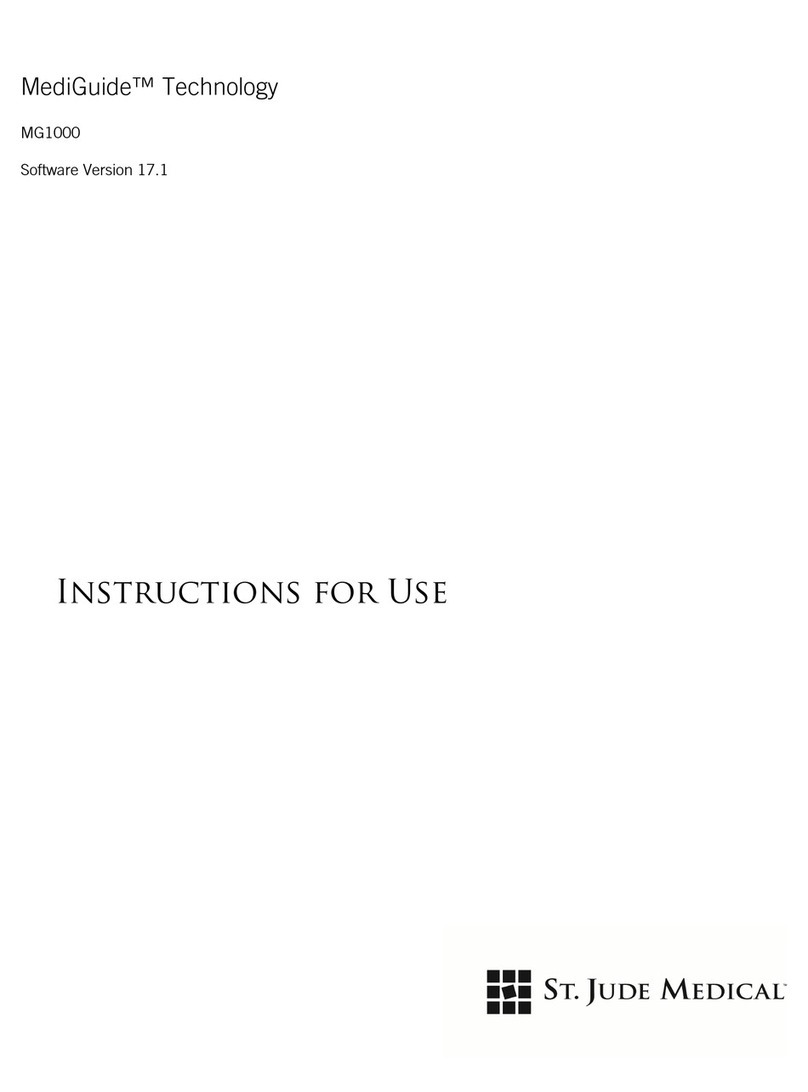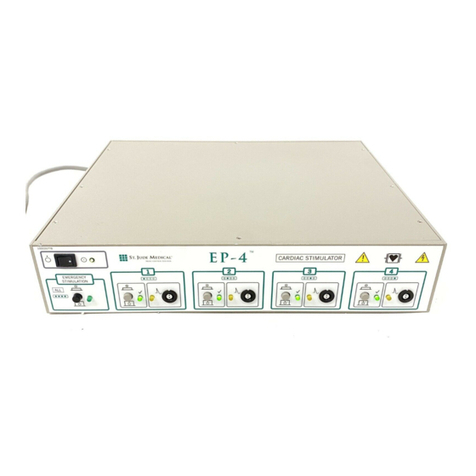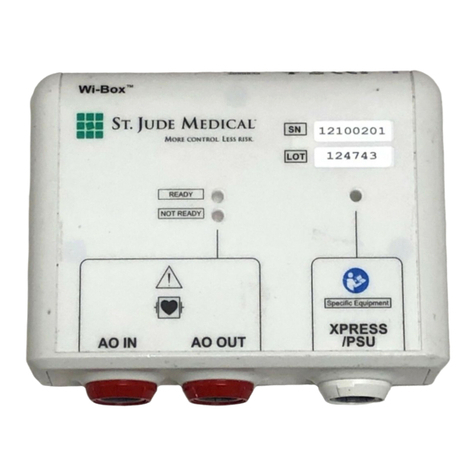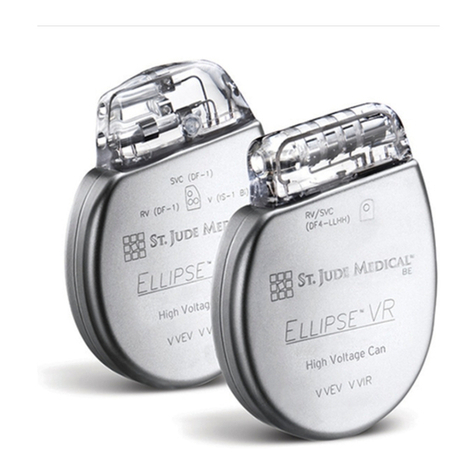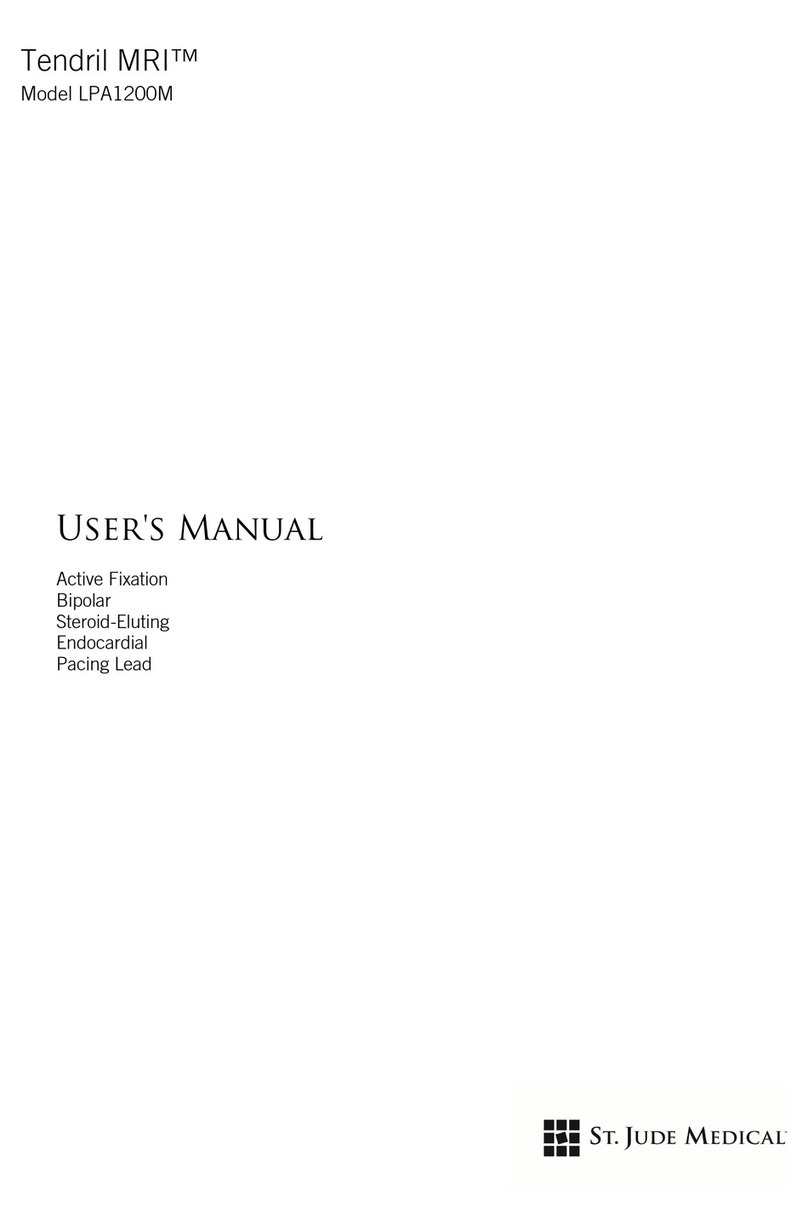
Ingestion of any part of the system may cause injury.
Care should be taken to keep all cables away from the neck and face to prevent airway blockage.
If the patient develops redness of the skin or a change in skin sensitivity occurs, they should discontinue use of this product
immediately and contact their physician.
All sensors have a unique calibration. Ensure that readings are only taken using the correct calibration information from the
sensor. Use of the incorrect calibration information may result in an inaccurate reading.
All right-heart catheterizations must be performed under fluoroscopic guidance to prevent sensor dislodgement.
The sensor is visible under plain film X-ray and fluoroscopy. Under CT imaging, there may be localized beam hardening artifact
around sensor implant.
Store the system in a temperature controlled, clean and dry area.
Use the system at temperatures between 5º to 40ºC (41º to 104ºF) and 15% to 93% humidity. Store the unit between -25 to
70ºC (-13º to 158ºF), 15% to 93% humidity.
All electronic devices with the system, including components and accessories, are to be used only with the sensor and not with
other products, appliances or devices. If there is evidence of a change in performance, contact Technical Support to obtain
more information.
Avoid excessive or damaging force when using the AC adapter.
Exposure to excess lint or dust may cause the system to malfunction.
The system consists of an electronics unit and an antenna. If any of the following occurs, immediately unplug the electronics
unit and contact Technical Support:
-Any of the cords are noticeably frayed or damaged
-Liquid has spilled onto the monitor, or it has been exposed to rain
-The system has been dropped or the enclosure has been damaged
If you lose the power cord, replace it with an identical cord. Contact Technical Support to obtain a new one.
Only an authorized technician should remove the cover or attempt to service the device. The warranty may be voided otherwise.
Do not place the system near a window. Exposing the LCD screen to rain, water, moisture or sunlight may severely damage it.
Do not apply excessive pressure to the LCD screen. Excessive pressure may cause damage to the display.
Portable and mobile RF communications equipment can affect medical electrical equipment and may cause a malfunction of
the system.
All new or refurbished equipment should be obtained from the manufacturer.
The system may require secure data transfer through the use of the internet or networks. Portions of this internet or network
pathway may become unavailable for periods of time for a variety of reasons including but not limited to: internet connectivity
outage, hardware failure, power outage, or general infrastructure failures. Readings and data that are unable to transmit are
stored and will transmit when connectivity is available.
The mean pressure measurement accuracy of the system may be affected by various factors. In the clinical trial, mean
pressure measurement error was observed when the sensor was deployed in a vessel which had an inner diameter of less than
7 mm, and in cases where there was an acute bend in the vessel of >30 degrees at the location of the sensor. Signs of mean
pressure measurement error include the following:
-Gradual mean pressure changes without a corresponding proportional change in the pulse pressure (systolic-diastolic
pressure)
-Negative mean pressures
If either feature is observed, temporarily suspend use of the pressure information for management of the patient and contact
Technical Support for further assistance. A right heart catheterization may be needed to recalibrate the Baseline (mean
pressure) in order to continue use of the system.
The touchscreen display on the handheld unit can be sensitive to electrostatic discharge (ESD) at high levels. To reduce the
potential for ESD discharge to the touchscreen, remove and hold the plastic handle of the handheld prior to contact with the
touchscreen.
If the touchscreen becomes damaged due to ESD, the screen will be discolored or may be unresponsive. Contact Technical
Support for replacement of the handheld unit.
Please note that high levels of ESD are more likely in situations where the relative humidity is very low, such as inside a heated
building during the winter in areas where it is cold outside. In order to reduce the potential for high levels of ESD, there are
common situations which create static electricity that can be avoided prior to use, for example, putting on and removing
clothes, dragging your feet across a carpet or rug, vacuuming, or removing clothes from a dryer.
The system is not intended to be used in a severe electromagnetic radiation environment or an industrial environment.
The system should not be used in conjunction or in association with Magnetic Resonance Imaging (MRI), computerized axial
tomography (CT), diathermy, Radio Frequency Identification (RFID), and electromagnetic security systems such as metal
detectors.
The system package contains:
Hospital Electronics System
Product documentation
The Hospital Electronics System is provided non-sterile.
2

